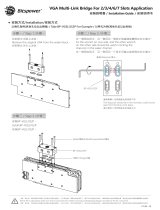
Caring for the environment
16
Disposal of the packing
material
The packaging is designed to protect
the appliance from damage during
transportation. The packaging materials
used are selected from materials which
are environmentally friendly for disposal
and should be recycled.
Recycling the packaging reduces the
use of raw materials in the
manufacturing process and also
reduces the amount of waste in landfill
sites.
Disposing of your old
appliance
Electrical and electronic appliances
contain many valuable materials. They
also contain certain materials,
compounds and components which
were essential for their correct
functioning and safety. These could be
hazardous to human health and to the
environment if disposed of with
household waste or if handled
incorrectly. Please do not, therefore,
dispose of your old appliance with
household waste.
Take care not to damage your
refrigeration appliance before or during
disposal in an authorised,
environmentally friendly manner.
This is to ensure that refrigerant in the
cooling circuit and oil in the compressor
is contained, and will not leak into the
environment.
Instead, please make use of officially
designated collection and disposal
points to dispose of and recycle
electrical and electronic appliances in
your local community, with your dealer
or with Miele, free of charge. By law,
you are solely responsible for deleting
any personal data from the old
appliance prior to disposal. You are
legally obliged to remove any old
batteries which are not securely
enclosed by the appliance and to
remove any lamps without destroying
them, where this is possible. These
must be taken to a suitable collection
point where they can be handed in free
of charge. Please ensure that your old
appliance poses no risk to children
while being stored for disposal.




















